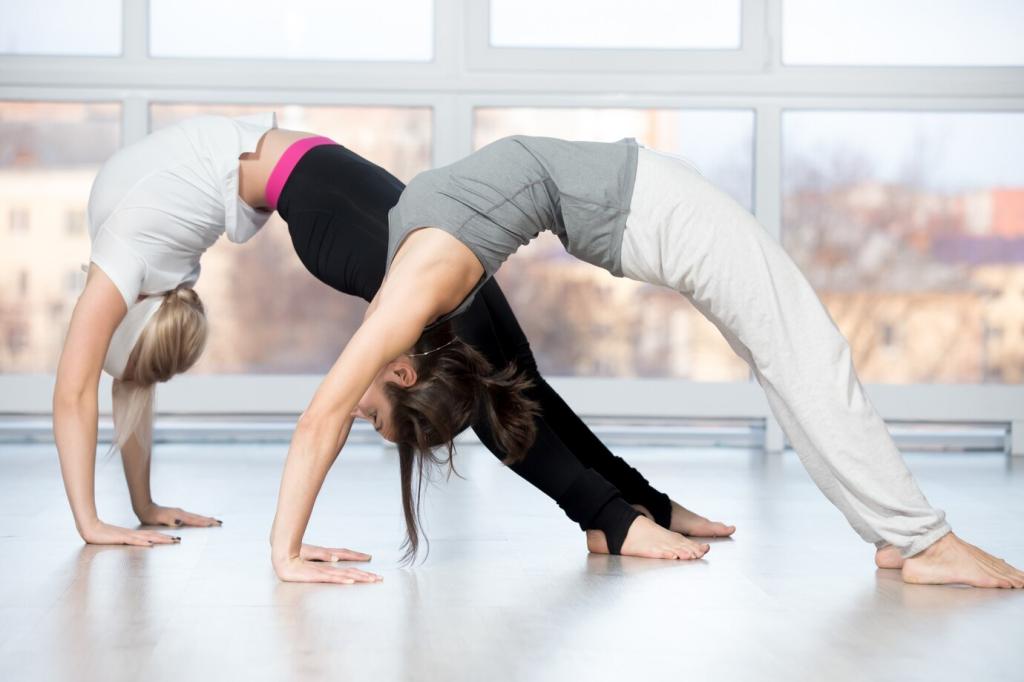Elevate Your Game with Yoga Breathing Techniques
Chosen theme: Yoga Breathing Techniques to Improve Athletic Performance. Step onto the mat and into your stride as we explore powerful breath practices that sharpen focus, fuel endurance, and accelerate recovery across every sport.
The Athletic Science of Breath
Diaphragmatic Breathing for Power and Stability
Your diaphragm is both a respiratory engine and a stabilizer. Training it improves oxygen efficiency, reduces accessory muscle fatigue, and reinforces spinal support during sprints, lifts, and long, grinding efforts.
CO2 Tolerance and Efficient Oxygen Release
Better athletes manage carbon dioxide, not just oxygen. By raising CO2 tolerance, hemoglobin releases oxygen more readily, easing breathlessness and extending sustainable pace without frantic hyperventilation.
Nervous System Control for Clutch Moments
Breath is a remote control for your nervous system. Slow, steady exhales downshift stress, steady hands, and sharpen decision-making when the clock runs low and pressure spikes hardest.
Ujjayi Breathing for Rhythm and Endurance
The Technique: Audible, Gentle, Sustainable
Slightly constrict your throat, breathe through the nose, and create a whisper-like sound. The subtle resistance promotes steady airflow, helping you maintain even cadence during long runs or rides.
Cadence Matching for Pacing Mastery
Experiment with ratios like 3:3 or 2:2 steps per inhale and exhale. This rhythm reduces erratic surges, stabilizes heart rate, and builds confidence during hills, headwinds, and late-race challenges.
A Runner’s Story from Chaos to Control
Maya once gasped through 10K races. After three weeks of Ujjayi with step counts, she ran negative splits, passed three competitors in the final mile, and finished smiling, not shattered.
Kapalabhati and Bhastrika: Priming for Power
Perform short sets of Kapalabhati—sharp exhales, passive inhales—to wake the core and elevate alertness before sprints or lifts. Keep volume modest to avoid dizziness or unnecessary fatigue.
Kapalabhati and Bhastrika: Priming for Power
Controlled, equal-force inhales and exhales can prime nervous system readiness. Use one or two brief rounds, then settle with a calm breath to channel power without tipping into anxiety.
Nadi Shodhana and Box Breathing for Recovery
Nadi Shodhana shifts you from fight-or-flight into calm clarity. Five minutes post-session reduces lingering stress, softens jaw tension, and promotes a smoother heart rate descent after hard intervals.
Nadi Shodhana and Box Breathing for Recovery
Inhale, hold, exhale, hold—four counts each. This square rhythm signals safety to your nervous system, improving digestion, sleep quality, and tomorrow’s readiness score on your favorite wearable.


Endurance: Breath Ladders for Tempo Control
During tempo runs, climb a breath ladder: two minutes 3:3, two minutes 2:2, then return. This progressive rhythm builds resilience, teaches patience, and prevents the early, costly surge.
Strength: Bracing with Bandhas for Safer Lifts
Combine diaphragmatic breath with gentle core engagement inspired by yoga bandhas. Inhales expand 360 degrees; controlled exhales maintain tension. Expect improved bar path, fewer leaks, and calmer re-racks.
Team Sports: Fast Reset Between Plays
Use a quiet two-count nasal inhale and four-count exhale during timeouts. It cuts mental noise, improves communication, and steadies hands for crisp passes and accurate shots under pressure.
Simple Tests: BOLT and Breath Holds
Record a relaxed breath-hold after a normal exhale—the BOLT score. Watch it improve as nasal breathing and CO2 tolerance grow, indicating easier runs and smoother conversational pace.
Data You Can Trust Without Obsession
Pair perceived exertion notes with heart rate and HRV trends. Look for steadier mornings, calmer mid-workout breaths, and faster recoveries rather than chasing perfection on noisy metrics.
Join the Conversation and Subscribe
Tell us your favorite breath drill, post your BOLT gains, and ask questions below. Subscribe for weekly athlete-tested practices and invite a training partner to try today’s flow together.

